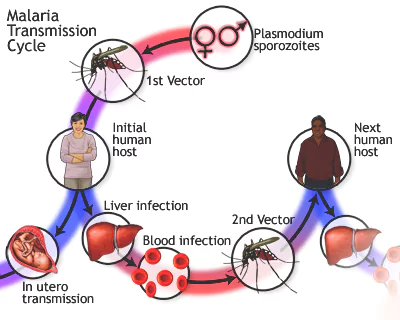Context
Ministers of Health from African countries with the highest burden of malaria recently signed the Yaounde Declaration with the objective of ending malaria deaths.
Yaounde Declaration On Malaria
- Signing: It was signed by the health ministers of 11 African countries with the highest burden of malaria, committing to accelerated action to end deaths from the malaria disease.
- Hosts: It was signed at the Yaoundé conference, co-hosted by the World Health Organization And the Government of Cameroon.
- The conference gathered Ministers of Health, global malaria partners, funding agencies, scientists, civil society organizations, and other principal malaria stakeholders.
- Signatories of the Declaration: Burkina Faso, Cameroon, the Democratic Republic of the Congo, Ghana, Mali, Mozambique, Niger, Nigeria, Sudan, Uganda and Tanzania.
- These countries carry roughly 70% of the global malaria burden.
- Pledge: They pledged to sustainably and equitably address the threat of malaria in the African region, which accounts for 95% of malaria deaths globally.
- Commitments:
- Investment in data technology;
- Application of the latest technical guidance in malaria control and elimination; and to enhance malaria control efforts at the national and sub-national levels.
- Increased Investments in Health Sector: The ministers further pledged to increase health sector investments to bolster infrastructure, personnel, and programme implementation; to enhance multi-sectoral collaboration; and to build partnerships for funding, research, and innovation.
- Accountability: In signing the declaration, they expressed their “unwavering commitment to the accelerated reduction of malaria mortality” and “to hold each other and our countries accountable for the commitments outlined in this declaration.”
About Malaria Disease
- Type of disease: Malaria is an infectious disease transmitted by female Anopheles mosquitoes and caused by plasmodium protozoa.
- Prevalence: It poses a life-threatening risk, primarily affecting tropical and subtropical regions in Africa, South America, and Asia.
- Cause:
- This disease is caused by plasmodium parasites, which spread through the bites of infected female Anopheles mosquitoes.
- These parasites multiply initially in liver cells and then attack Red Blood Cells (RBCs).
- Transmission: The transmission of malaria occurs through the bites of infected female Anopheles mosquitoes. The parasites proliferate first in liver cells before invading Red Blood Cells (RBCs).

- Species and Threat: Five parasite species cause malaria in humans, with Plasmodium falciparum and Plasmodium vivax posing the most significant threat.
Indian Initiatives to Control Malaria
National Framework for Malaria Elimination (2016-2030)
- Target: The Government of India set a target to eliminate malaria in India by 2027.
- National Strategic Plan for Malaria Elimination for 5 years.
- Launched in 2017, It shifted focus from Malaria control to elimination.
- It provided a roadmap to end malaria in 571 districts out of India’s 678 districts by 2022.
- Malaria Elimination Research Alliance-India (MERA-India)
- India Achievement: India has achieved a reduction of over 83% in malaria morbidity and 92% in malaria mortality between the years 2000 and 2020.
Also Read: World’s First Vaccine For Chikungunya Approved
News Source: Down to Earth
![]() 11 Mar 2024
11 Mar 2024

